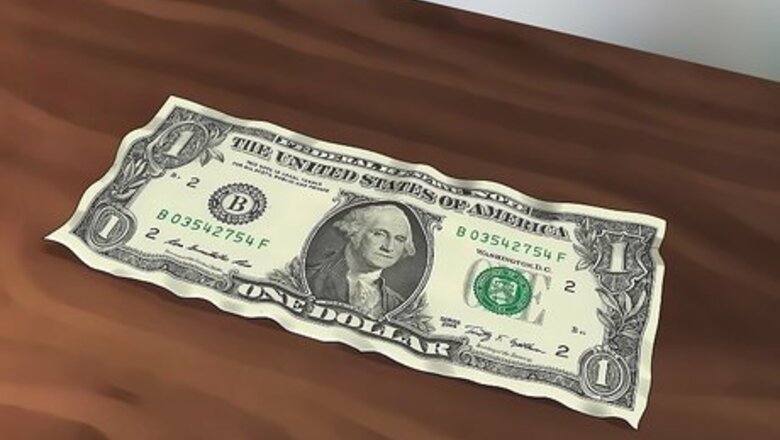
views
Ironing the Bill
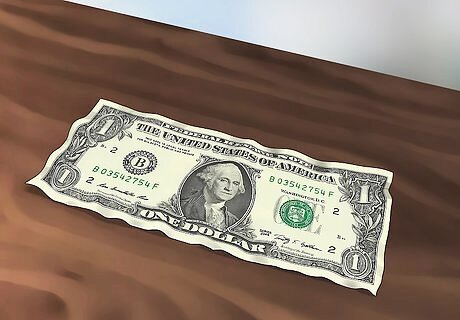
Place your dollar on a flat surface. The ironing board is the most logical place to iron your bill. If you don’t have an ironing board, you can use a nearby table, but make sure to place a shirt or other linen on the ironing area so that you don’t burn the table.

Moisten the bill with water. Spray a little water onto the dollar bill. You can do this with the spray function featured on the iron itself. Moisture helps remove those particularly pesky wrinkles during ironing. If you don’t have an iron with a spray function, use a spray bottle or run the bill under a sink that is set to low pressure.
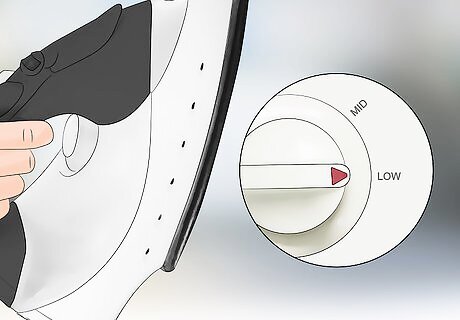
Turn your iron down to the lowest heat. The goal is to dry the moisture out of the bill with the lowest heat necessary. Higher heat settings run the risk of damaging the dollar bill.
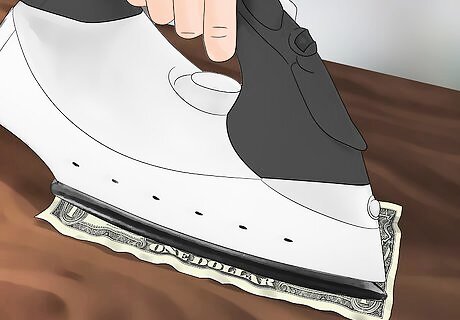
Iron the dollar slowly. Use straight movements from one direction to the other. Repeat this a few times until the bill no longer appears to further flatten. Take care to avoid ironing folds into the bill. If you are having trouble getting the bill to lay flat, place it flat inside of a shirt. This will keep the bill weighed down flat while still allowing you to iron the bill. Start ironing the bill as your iron is still heating up. This is particularly helpful if your iron's lowest setting is still particularly hot.

Let the bill cool for 60 seconds. The bill will be very hot to the touch immediately after ironing, so be careful! After the bill has cooled, you may flip the bill and repeat the ironing process on the new side of the bill. You may reapply some moisture to the other side of the bill if it still has a large amount of folds or wrinkles.
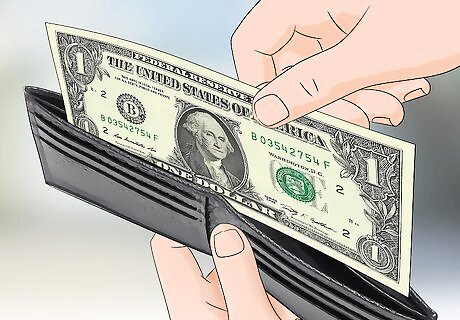
Store flat for safe keeping. Once you are satisfied that the bill cannot get any flatter, you are finished. Pick up your newly flattened bill and place alongside the others in your wallet.
Cornering the Bill
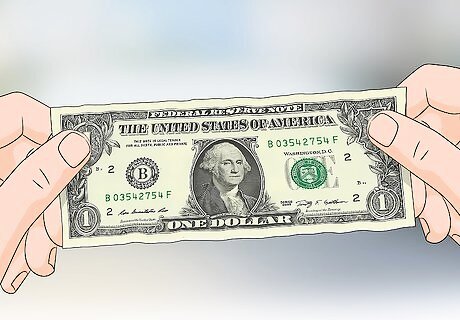
Hold the crumpled bill at each end. You want to hold the bill as straight as possible between both of your fingers. Hold it taut, but take care not to accidentally pull the bill apart in your hands.

Run the dollar bill against a cornered surface. Make sure the entire surface of the bill is firmly dragged across the edge of where two planes meet. The goal is to force the wrinkles and folds out of the bill. The corner of a vending machine is a convenient place to try this method, given that the vending machine likely wouldn’t accept your bill in the first place. However, any edged surface will do, including wall, desk or table corners. If the corner you are using doesn’t seem to be straightening out the bill, try using a corner with a more inclined or sharper edge.
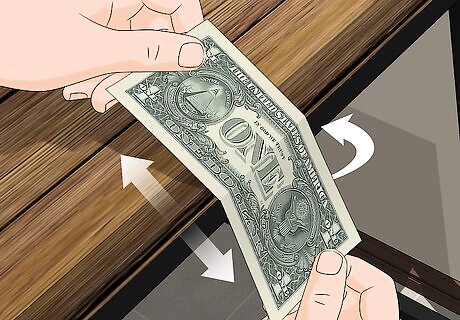
Flip the dollar in your hands and corner the other side. If you only run one side of the bill against a corner, you run the risk of creating new folds or bends in the direction you were applying force to the bill. Flip the bill and run the opposite face across the corner same as you did to the first in order to create as much parity as possible.
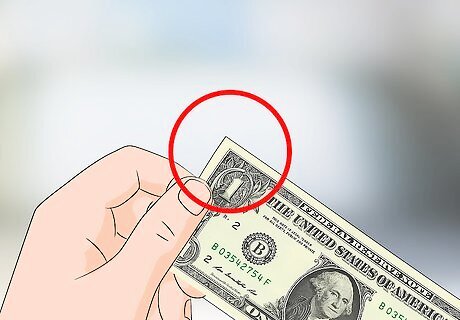
Check the corners of your dollar bill. It’s difficult to straighten the corners of the bill out using the edge of a wall. When you are done straightening the body of the bill, check the corners for “dog ears,” or small bends at the corners of the bill. If a dog ear is present, fold and crease the ear in the opposite direction to try to level out the bend (similar to removing creases from rugs or cloth).

Repeat until flattened. Repeat the whole process until the darned vending machine takes your dollar bill. If the machine continues to reject the bill, you might have to use another bill.
Pressing the Dollar Bill
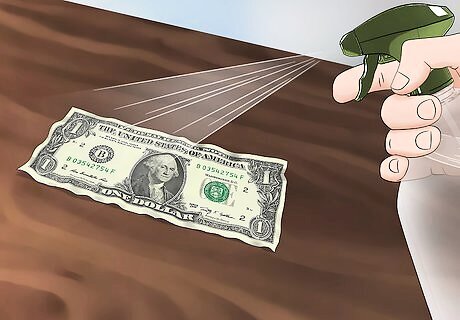
Moisten the dollar bill. Spray the dollar bill with water. Use a water bottle to mist evenly. Unlike when ironing a dollar bill, you want the bill to be noticeably moist or humid. However, it is not advised to completely soak the bill in water through submersion.
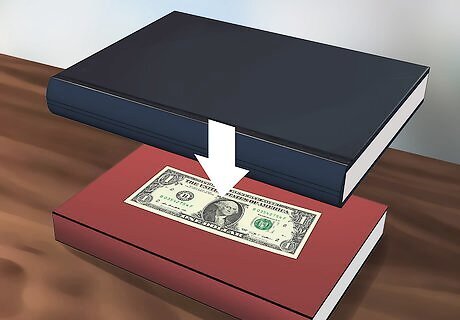
Press the bill between two heavy, flat objects. Ideal objects to use for pressing include heavy books such as dictionaries or phone directories. These objects press the bill flat and hold it in place while it dries. Place an absorbent material between the heavy object and the bill to prevent water damage to the pressing object and to facilitate drying. Try cheesecloth, hemp or other common absorbent fabrics to help absorb moisture from the bill. If you don’t particularly care about the book in question, the bill along with the absorbent material can be placed within the book itself. Lay the book flat to ensure the bill dries without bends or folds. The dollar bill can also be “framed” between two panes of glass as it dries. Framing the bill will help ensure a tight, flat seal and can take less space than stacking a few books.
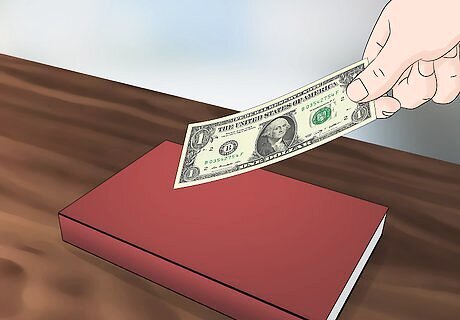
Check in on the dollar bill as it dries. Allow to dry overnight, checking in occasionally to gauge dryness. Change the absorbent material as necessary to keep the drying process moving at a steady pace. The bill shouldn’t take longer than a few days to dry. If it takes longer than a few days, change the absorbent material more frequently. You may have also moistened the bill more than necessary. Store the press in an area that is not also dark or damp to avoid encouraging the growth of mold.
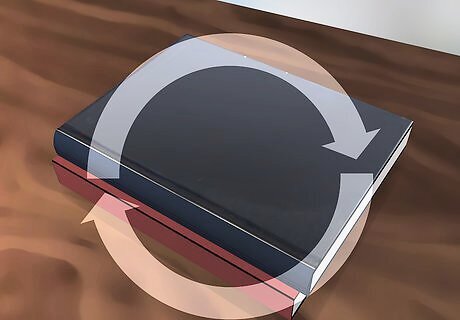
Repeat the process if needed. Once the bill is dry, it should lay flat without folds or creases. However, if the bill still curls, you may repeat the process, provided the bill is not too flimsy or weak to withstand another treatment.
With Water and Soap on Flat Surface
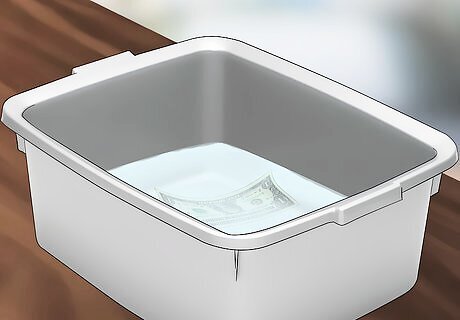
Place the dollar bill into a water basin that is full of water. It doesn't have to be super full, but must be able to fully coat the entire bill from one end to the other. The basin though, has to have a flat bottom for this fix to hold. It doesn't matter what side the bill is placed in the basin with, for the side facing you, however, for simplicity, start with the front side facing you first. Be careful of the temperature of the water. Although the water should be warm, it should never be scalding hot, as this could cause the bill to loose color.
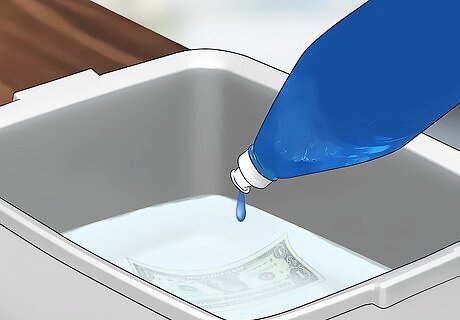
Dribble a little bit of kitchen soap into the area where the bill is in the basin. About a teaspoon or two might be enough. Two teaspoons will make it stiffer yet, but even closer to brand new than just the one teaspoon.
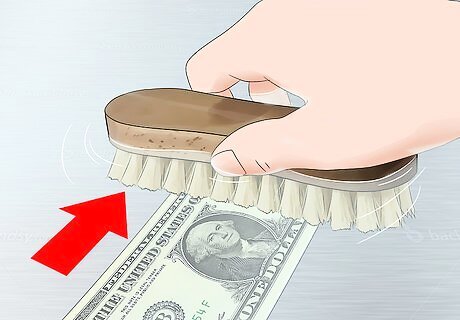
Use a bristle brush to gently rub the bill with the soapy water. Rub the bill from one end to the other. Don't apply too much pressure that the bill's ink begins to come off, otherwise it will have no legal tender on it. Apply enough pressure, like you were brushing your hair- steady pressure running up and down the bill. Rub the bill in circles with the bristle brush. Never rub straight across otherwise the bill's ink will smear and that's not good!

Turn the bill over when you have rubbed the bill's front side with the brush, and lay the back side of the bill face down in the same basin. Repeat the process with the bristles to the back side of the bill.
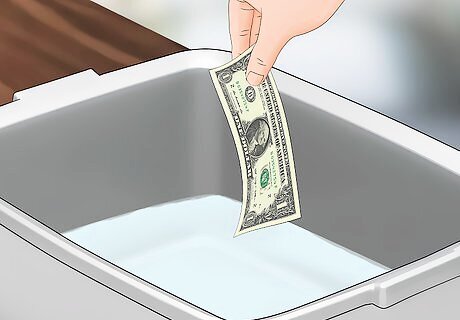
Remove the bill when both sides have been "cleaned". The soap helps restore the crispness that the bill once had when it came from the factory.
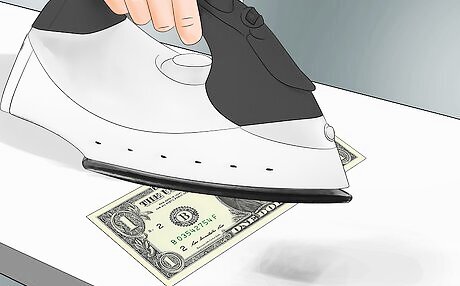
Iron the bill out with an iron and ironing board. Listen for the little "ticks"; these ticking sounds are the water droplets evaporating from the newly washed bill. Again, the side you begin with really doesn't matter. Don't ever spray any of the water from the iron onto the bill, unless the iron is sticking to the bill for some reason.
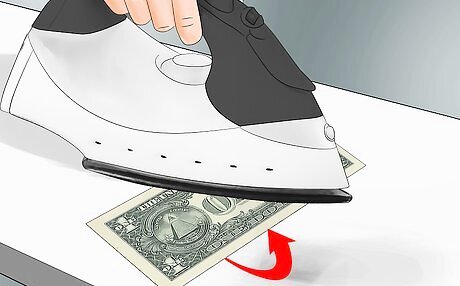
Iron the opposite side of the bill out.

Finish up. The bill should now look closer to new than it once was.










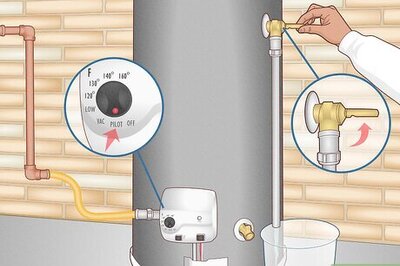




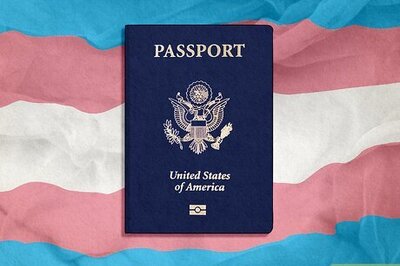

Comments
0 comment